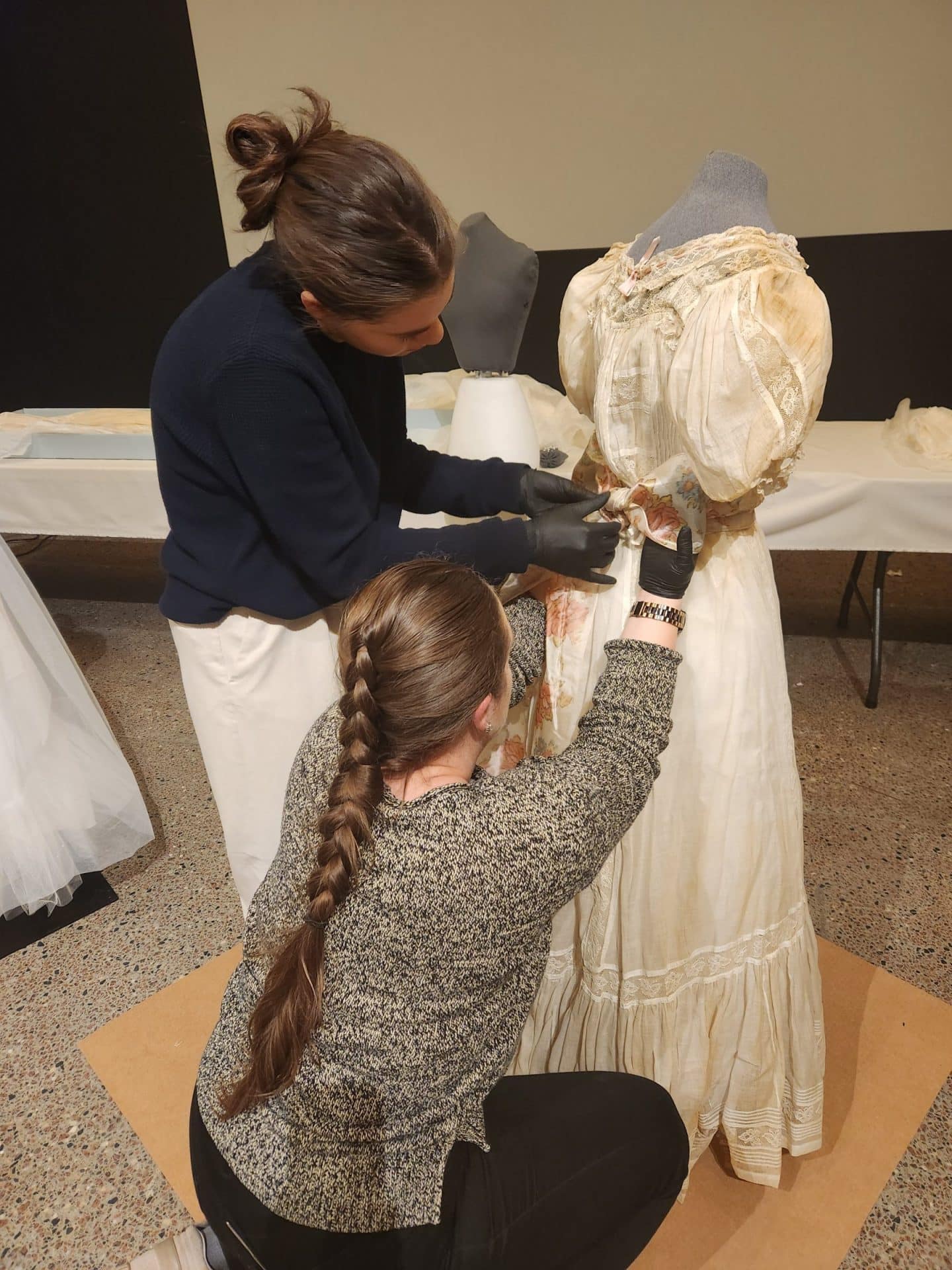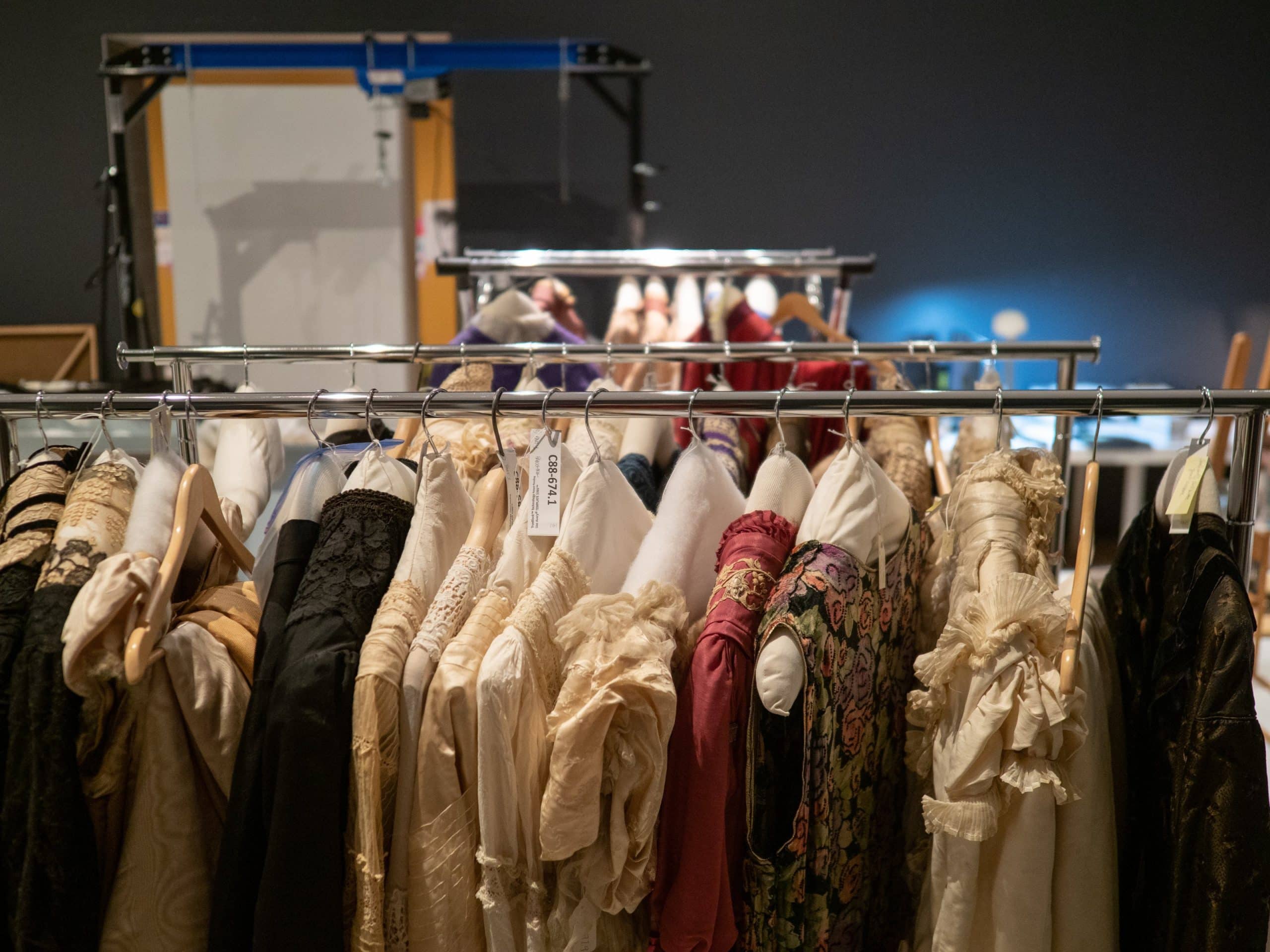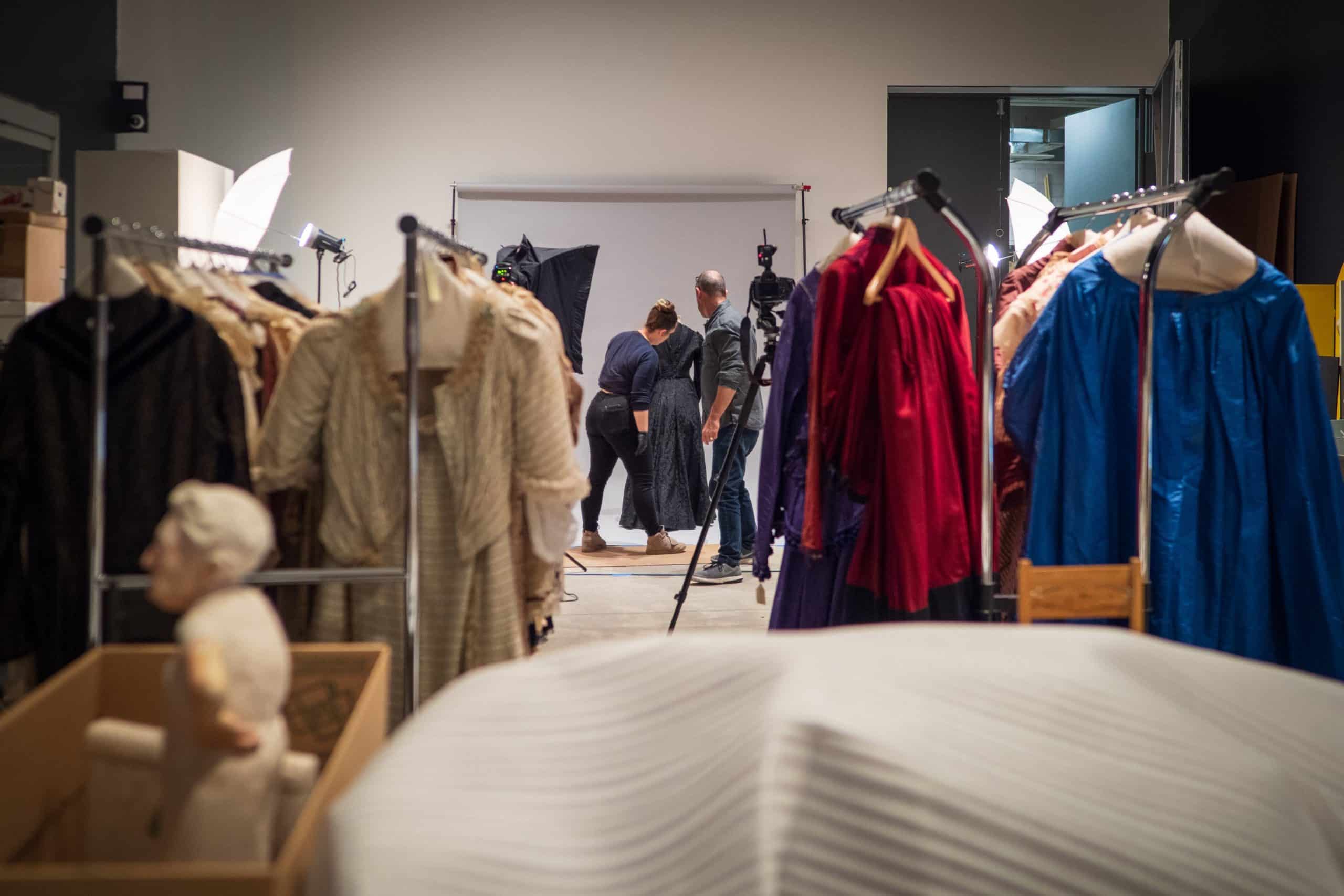Marissa Monette, Textile Conservation Technician and Julia Popsin-Gomes, Textile Technician Assistant sat down with Kate Yüksel, Communications Coordinator to talk about Agnes’s textile collection and what’s involved with preparing it for digitization and long-term storage during our closure.
We are currently completing the digitization of the entire historical dress and textile collection, the last of four sessions will be completed in December. Over 1000 dresses, accessories, menswear and childrenswear will have been photographed between April and December of this year. It took a total of thirty hours to photograph nearly two hundred dresses ranging in dates and silhouettes from 1827 to the 1970s. Additionally, we prepared mannequins, replica undergarments and specialized supports to help mount each garment.
Each garment or object that is part of the historical dress and textile collection is unique in its history, materials, manufacturing and condition. The various histories and previous uses of the objects, otherwise known as the object’s biography, contribute to its current condition.
During the process of photography, the object’s biography presents us with different challenges when mounting. These can include the stability of the materials, areas of deterioration, and the dressing process. During mounting, we need to gain an understanding of the unique forms of the original wearers and styles of each period to represent each garment as accurately as possible.
To support each garment safely and present the correct silhouette, it is important to choose the appropriate size of mannequin and mounting aids. A mannequin can be layered with replica petticoats, hoops or bustles, even a “pregnancy abdomen” to support the dress, skirt, bodice and accompanying accessories. Once each garment is fully mounted, the weight and complexity of the outfit, which can number up to seven separate components, requires delicate maneuvering to safely move the mannequin between the staging area and photography backdrop. During the photography process we are ultimately provided with the rewarding experience of having a more intimate perspective of the garments, their wearers and their makers.
Over 2500, including 475 complete dresses, 151 fans and purses, 235 headwear items, and 177 objects associated with childrenswear.

Marissa Monette, Textile Conservation Technician and Julia Popsin-Gomes, Textile Technician Assistant work together to mount a dress.

Agnes’s textile collection moves to the Contemporary Feature Gallery for documentation.

Marissa Monette, Textile Conservation Technician and Bernard Clark, Photographer work together to document Agnes’s textile collection.
One of our favourite parts is having the chance to bring to life these historical objects and garments by bringing them out of storage and mounting them. Some of them have not yet had the opportunity to be mounted since coming into the collection giving us a rewarding chance to fully understand the way the pattern was designed and the layers needed to achieve the desired style. This also provides a unique chance to visually examine the intricate construction of these multifaceted garments. Often the details and finishes in the interior of a bodice or skirt will tell its own narrative of the maker’s attention to detail and skill in material choice and craft. There are often metal clasps, silk-covered buttons, boning and multiple layers of interfacing that lie between the wearer’s form and the external facing fabric covered in beading, jet, embroidery or lace. All of these aspects culminate in a unique experience to observe and ponder what each garment has to tell us.